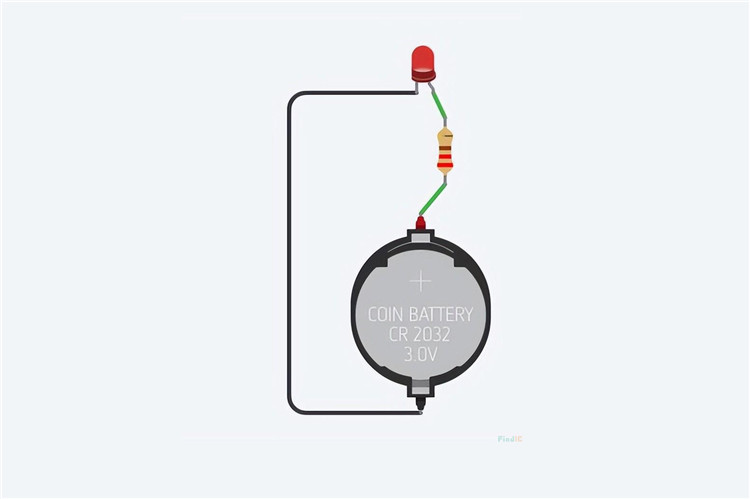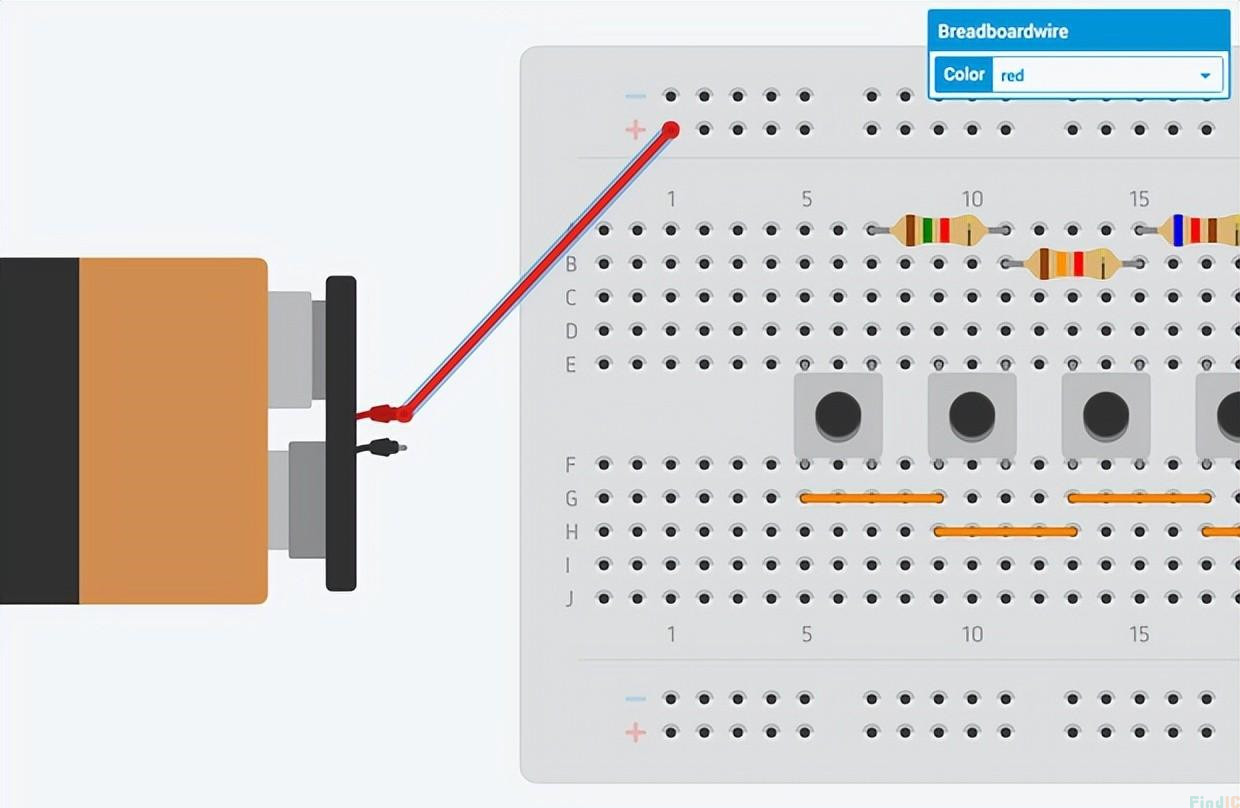An article for you today: How to learn circuit design?
Very often, when we are learning circuit design, we come across situations where we have an idea that we want to implement and want to do it; but then we find that the idea is not necessarily well implemented in the real design, and we don't know much about circuit principles, let alone how to go about learning circuit design.
So how should we go about learning? Here's a chat about this in the following 7 areas.
1. How can I quickly improve my circuit design skills?
When learning any knowledge or skill, the first thing to do is to become familiar with its implementation.
Circuit design is a very practical subject and there are many features of the learning process that are different from those of other disciplines, and attention should be paid to the practical hands-on skills of students during the teaching process.
Firstly, in terms of the curriculum, the design of a circuit should have a complete teaching process and corresponding experimental classes to complete it as far as possible. In this regard, theory and practice can be used to improve the students' ability to apply their knowledge in a comprehensive manner to solve practical problems.
In order to give you a better understanding of the subject of circuit design, the author gives you an overview of how to proceed in terms of study, examination and assessment.
Circuit design is a very comprehensive course that covers both theoretical knowledge and experimental skills, and the two are complementary and mutually reinforcing.
As theoretical knowledge and experimental skills are inextricably linked, it is important to work closely with both in classroom teaching so that the desired teaching effect can be achieved.

PCB circuit boards
The following describes how to proceed with learning:
Start by defining your learning objectives: before you proceed with circuit design you must first define your learning objectives and then develop a learning plan.
First understand where you are going with your design
Understand what basic knowledge you should have for the circuit you are designing
(1) Be familiar with the concepts, units and measurements of basic physical quantities, such as resistance, reactance, capacitance, inductance, etc;
(2) Knowledge of commonly used circuit components and their characteristics, e.g. diodes, triodes, etc., and an understanding of their characteristics and range of applications;
(3) Knowledge of the use of circuit analysis software and operational skills;
(4) To master the basic principles of basic signal processing and be able to design simple analogue and digital circuits.
(5) Understand the interrelationship between basic devices, such as diodes and triodes, resistors and capacitors, etc.
By mastering these basics and having initially determined your own learning direction, you can start by understanding what components you will use when designing your own circuits and how to use them, and other related knowledge.
2.Find some good circuit drawings
If you are interested in circuit design, you can look at some good books on circuits and some good circuit drawings.
[1] On this basis, if you have a solid knowledge of circuits, you can also choose the right textbook according to your study objectives or study plan requirements.
[2] Have a clear objective and at the same time draw up a detailed study plan (including specific tasks and time schedule).
[3] Since we always want a good result when we do something, we have to be prepared for the effort and the possibility of difficulties in the process.
In the course of study, we should pay attention to the mutual exchange of study methods and experiences and experiences with our teachers and classmates.
It is also important to take part in more academic activities as well as science and technology competitions in which you have had one or more winning experiences.

Circuit diagram
3.Read more books and learn more
Read more books on circuit design to improve your professional ability.
In addition, for the "analog electronics" "computer fundamentals and applications" and other professional-related books can also read more.
For students of other majors, learning circuit design requires not only a certain amount of theoretical knowledge, but also practical hands-on skills.
(1) For the course of circuit design, because it is very comprehensive, so it can not just stay in the books. You should do more hands-on practical work for a period of time to improve your application skills by combining theory and practice.
(2) Exercise your hands-on skills by doing experiments, reading books and studying, and doing designs.
(3) After completing certain experimental tasks, think more about summarising some of the lessons learned and comparing them with similar circuits that you have done before.

Circuit boards
4.Think for yourself and do more
In the process of circuit design, you can't do it behind closed doors, you have to think for yourself and do it more, only then can you have a deeper understanding and knowledge of circuit design.
If you don't understand something in class, you should read the book or find information online after class.
Finally, we would like to stress that "more problems" and "diligent practice" are three important aspects of the circuit design process.
It is a fundamental feature of circuit design that you need to improve your design skills by practising a lot throughout the design process.
In this process, attention should also be paid to
(1) When working on a problem, it is important to first understand the meaning of the problem;
(2) To have a correct mind and good habits, i.e., not to read books or find information to solve problems immediately;
(3) To examine, think about and understand the meaning of a question when doing it;
(4) It is advisable to do some after-school exercises or other extension exercises after doing the problems;
(5) Always practice more in class to consolidate what you have learnt.

Circuit diagram
5. Learn the use of software (including drawing tools)
The discipline of electronics is developing rapidly and many new electronic circuits are appearing all the time. The design of these circuits requires the use of computers to assist in their completion, and computer-aided design must be done with the help of a variety of drawing tools.
Software tools are the soul of modern electronic engineering and are essential for the design engineer.
Circuit design involves a variety of disciplines and tools, such as EDA, hardware description languages, digital signal processing and automatic analysis software, all of which play an important role in circuit design.
Therefore, when studying circuit design, you should acquire the necessary knowledge of electronic engineering and apply the theory you have learned to circuit design.
In addition, the use of some commonly used software for circuit experiments and computer-aided drawing operations, such as MATLAB, C# and VBA, should be mastered.
6.To learn theoretical knowledge, do not blindly worship others, but dare to challenge yourself.
Learning theoretical knowledge cannot simply rely on books, nor can we be superstitious about authority, we must be brave enough to question the content of the teacher's lectures.
First of all, theoretical knowledge is for practice, to enrich their theoretical knowledge according to practice; secondly, learning theoretical knowledge should be combined with practice.
when you have learned to use a unit of knowledge to solve several practical problems, you will have more opportunities to discover it and summarise it;
when you have mastered the knowledge of several units, you will have constructed a complete schematic diagram of the electronic circuit design (including device layout etc.) in your mind;
When you have mastered a few cells or groups of circuits, you will see that a problem in electronic circuit design is likely to be just a small component that has gone wrong.
[Note]
Be sure to learn to study on your own and to combine theory with practical work and practice.
When faced with a difficult problem, always find a way to make sense of it;
also independently come up with a sensible solution when they can't solve the problem themselves.

Circuit boards
7. Learn to summarise and induct
Summarising and summarising is also an ability that can be useful for learning.
Circuit design is a very practical course, in the teaching should pay attention to the specific practical situation to allow students to summarise and summarise what they have learned.
In the learning process, we should pay attention to the development of students' inductive skills, through analysis and summary, to distil and summarise the knowledge learned, forming a more systematic knowledge structure.
Students should pay attention to the accumulation of experience related to practical work, which will enable them to better understand what they have learnt.
At the same time, students should be encouraged to deepen their understanding of what they have learnt by solving problems on their own.
In addition, as an engineering student, you should also pay attention to independent thinking and creative consciousness.
In the learning process, attention should also be paid to practical hands-on aspects, such as making simple small designs and productions, and carrying out practical operations under the guidance of the teacher.


